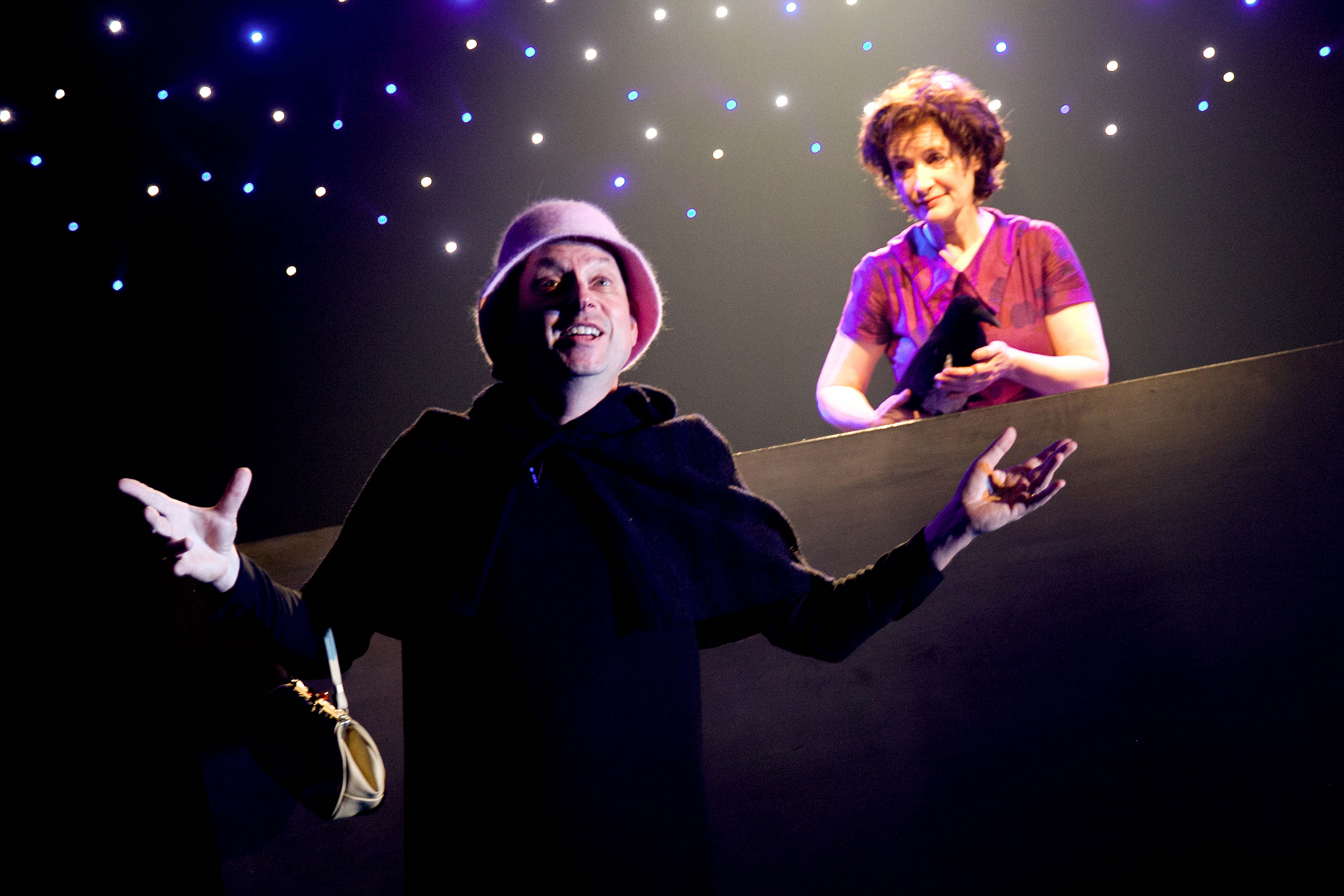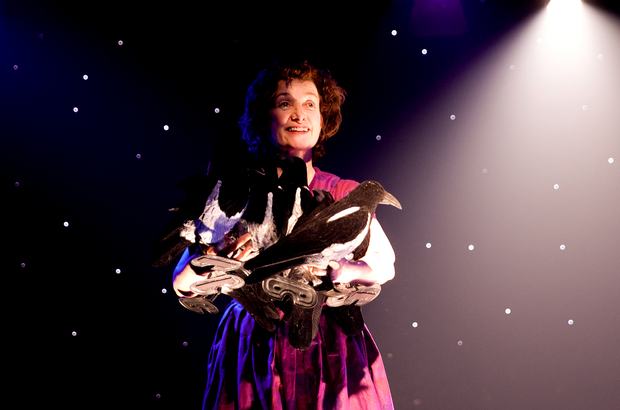AMY MACPHERSON reviews The Secret Keeper at Ovalhouse.
In an era of high profile cover-ups, whistle-blowers, and scandals such as the banking crisis, the Catholic Church revelations and Edward Snowden, Angela Clerkin’s new play should really hit home. However, the message of this ‘political fairy-tale for adults’ is not always clear. The Secret Keeper seems at first to be a plea for greater transparency: as the audience discovers, terrible consequences arise when secrets are kept under wraps – people inevitably recommit their crimes when they believe that they can perpetrate them with impunity. This seems to be the play’s moral – at least, until the ending, when the titular secret keeper suffers a fiery demise for spilling the secrets. This raises new questions about whether total transparency is really for the better, but it comes a little too late. Indeed, the narrative would pack more of a punch if it fully explored the problems of transparency as well as of opacity. All this being said, the play is nonetheless an enjoyable production that does at times deftly engage with its central issue.
The plot is simple enough, though it is of course complicated by its themes of personal, corporate and global dishonesty, which have far-reaching implications. A doll-maker is haunted by a terrible secret. One day, he decides to confide in his ‘Good Daughter’ (Angela Clerkin) and, miraculously, the burden of his secret is lifted. Thrilled, he invites the whole town to reveal their deepest, darkest secrets to the girl. Such secrets, in the form of magpies, accumulate around the Good Daughter until at last she can no longer keep them.

The set and costumes at the beginning of the play effectively set the atmosphere of corruption that pervades the show: the hooded figures half-obscured by darkness are an especially unsettling presence. The bright, tinkling music that floods the performance space promises whimsy and intrigue, but the stage design from then onwards is a little disappointing. Perhaps it is too much to expect the sumptuous gothic outfits in the promotional material, but more appropriate costume and props might have helped to set the mood of a dark fairy-tale.
Indeed, the only visible gothic element on stage is the magpies: the beaks/plague masks worn by the actors portraying these magpies work very well. Evoking the metaphor of disease, they create a link to moral and political corruption, as well as looking suitably creepy, like something out of a strange medievalist cult. At the end of the piece, when the Good Daughter is permanently silenced, the surrounding magpies place the beak on her nose and mouth. The magpie props are also an innovative way of representing each secret: we can see them build in numbers until there’s a whole flock of them ready to take flight.

Clerkin’s use of the ‘Good Woman’ topos (prevalent in fairy-tales such as Cinderella, Sleeping Beauty and Rapunzel) is, at times, an effective way of exploring the mentality of someone who is initially complicit in cover-ups, before becoming a whistle-blower – though not always. Good women in fairy-tales are always passive: no matter how cruelly their wicked relatives treat them, they never raise objections and do as they are told without complaint. The best example of this is Cinderella, a woman who obeys the wishes of her evil stepmother and stepsisters without ever questioning why she must suffer for the sake of their contentment. It is the storyteller who calls out the abusers and recognises the evils of their behaviour – never the good woman. The ‘Good Daughter’ in The Secret Keeper, following in this tradition, accepts to bear the burden of other people’s darkest secrets, because this is what a ‘good’ girl does. As her father pointedly tells her, as the Secret Keeper, her role is not to respond, not to question and not to voice opinions: it is simply to listen.
What the play does not fully explore is how someone who knows such secrets can deny their own culpability in such darkness, by concealing the truth. Instead, the script opts to focus on how the sense of privilege and prestige that comes with possessing such unsavoury knowledge is morally corrupting. This message is occasionally a little patronising, especially when it is incorporated into a repetitive song more suitable for children than adults: ‘It’s All About Me! It’s All About Me!’ Indeed, the weakest aspect of the production is the songs: the lyrics tend to be one phrase chanted over and over, and do not really add much to the themes and atmosphere of the play. One of its strongest aspects, on the other hand, is the humour that pervades the script, as well as some of the references to modern day scandals that actually possess some bite. This production is often highly compelling, though a little tweaking would make it that much more powerful.
Angela Clerkin and her team deliver a play that is entertaining, relevant and at times very funny. However, it is not always successful in developing the themes at its heart. Exploring the Julian Assange angle of transparency – which is viewed as mainly negative by western audiences – as well as the Edward Snowden angle, might have made this piece a little more interesting. Some set and costume choices are more successful than others, but those that do work, work very well indeed. At the heart of the play is an engaging premise – a little more clarity, and the production would be a winner.
The Secret Keeper ran until October 21st at Ovalhouse. Find more information here.
Featured image courtesy of Sheila Burnett.





